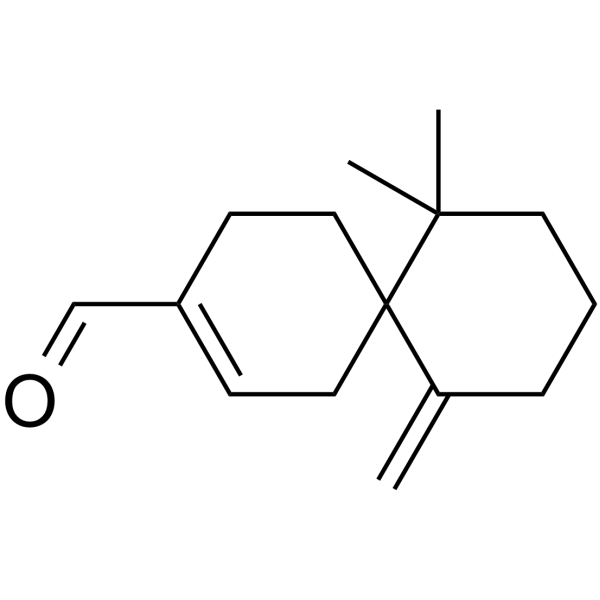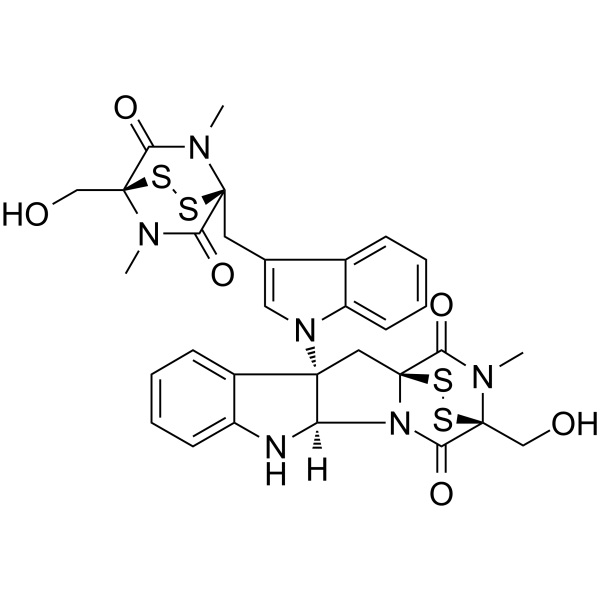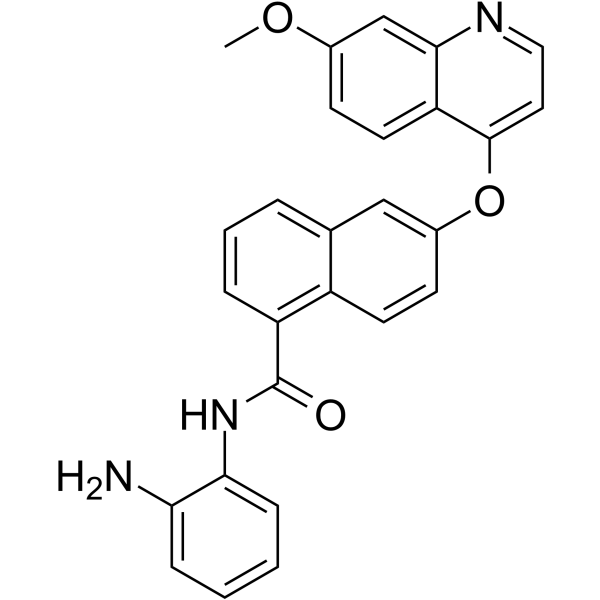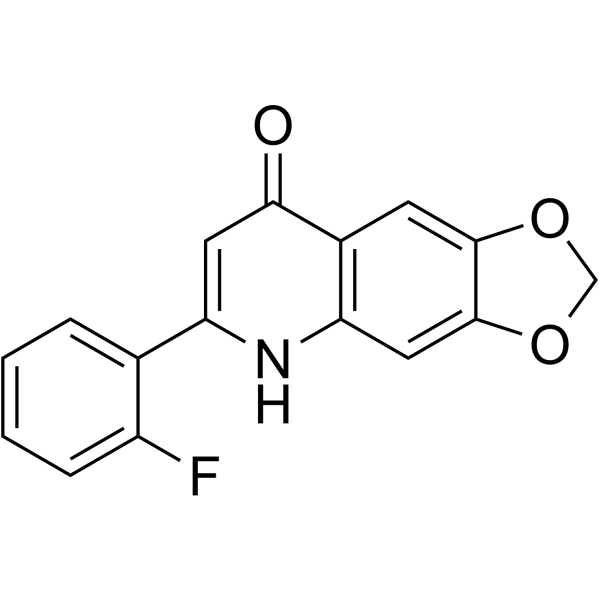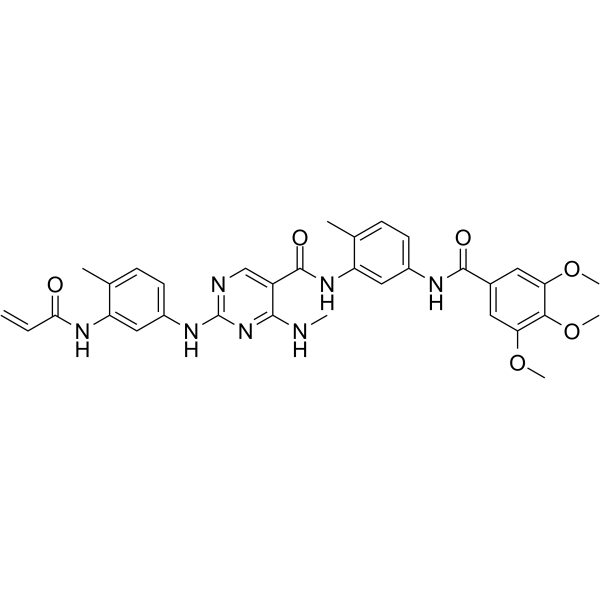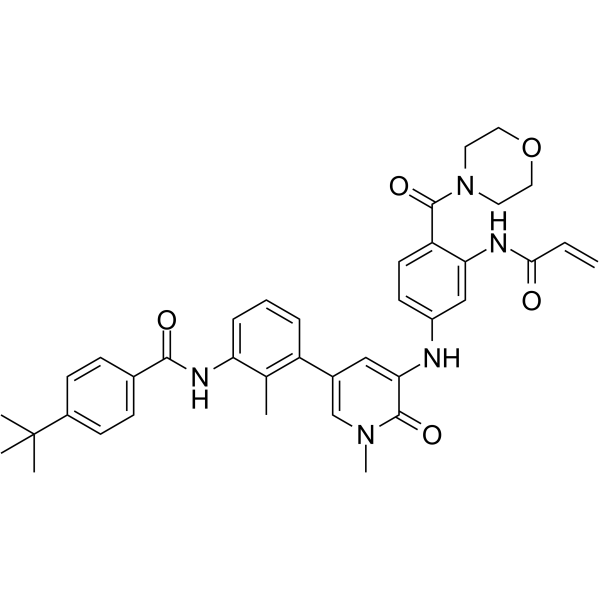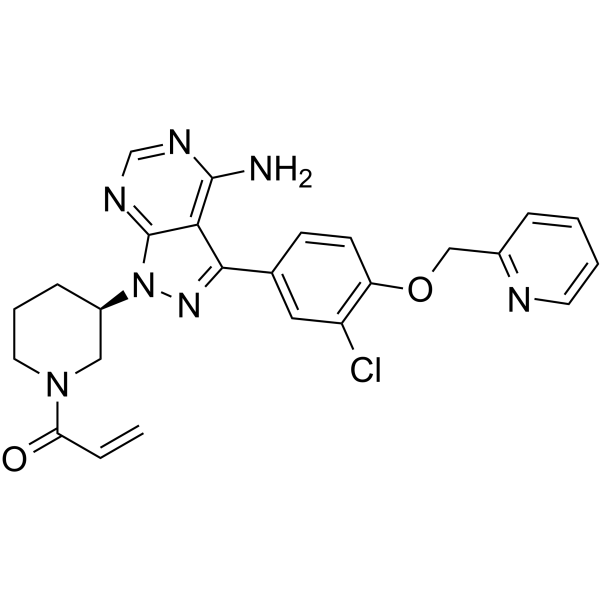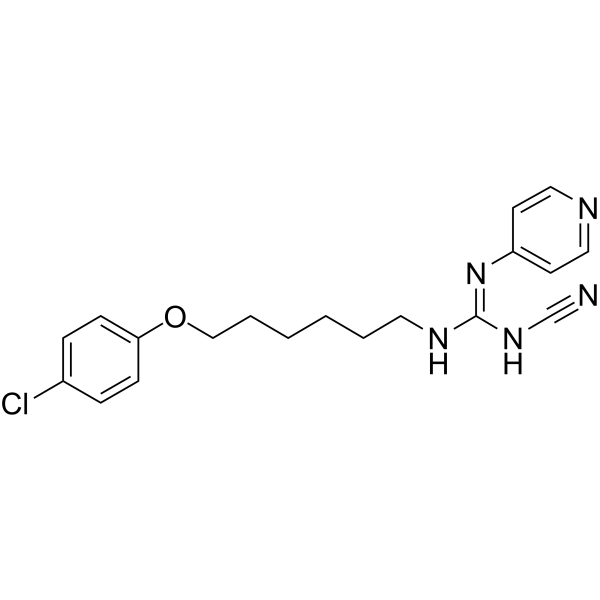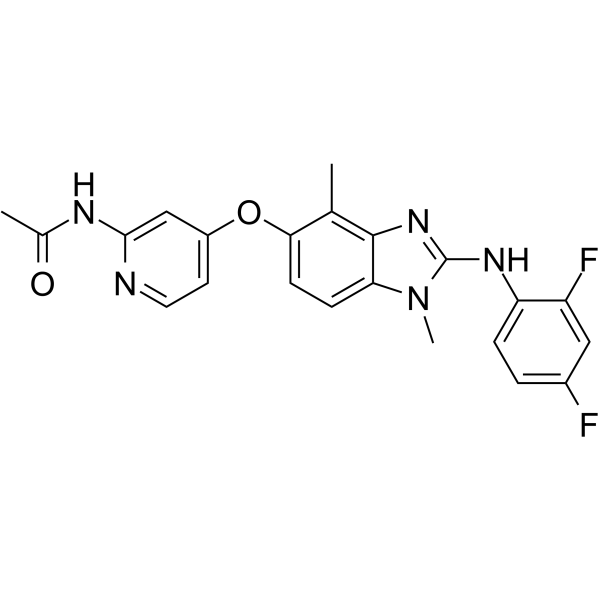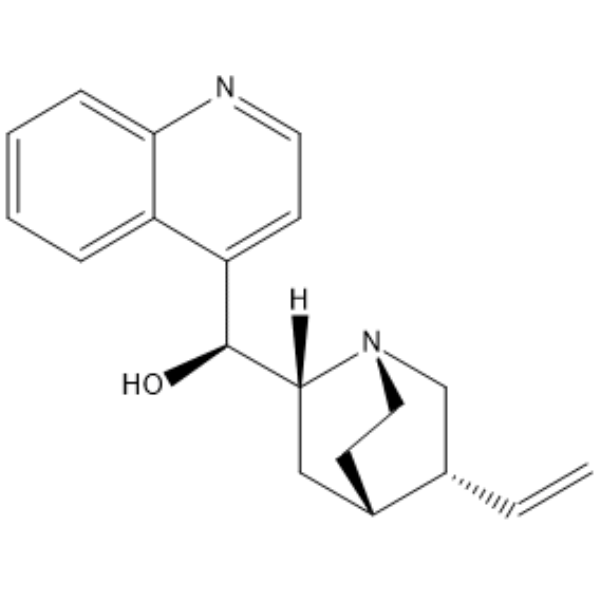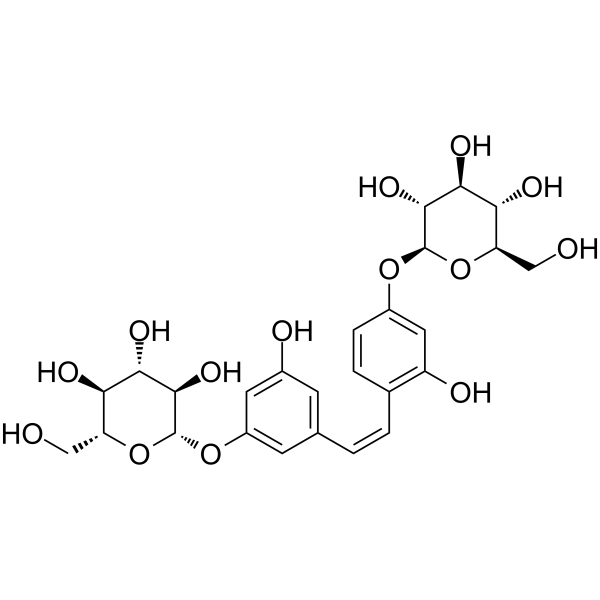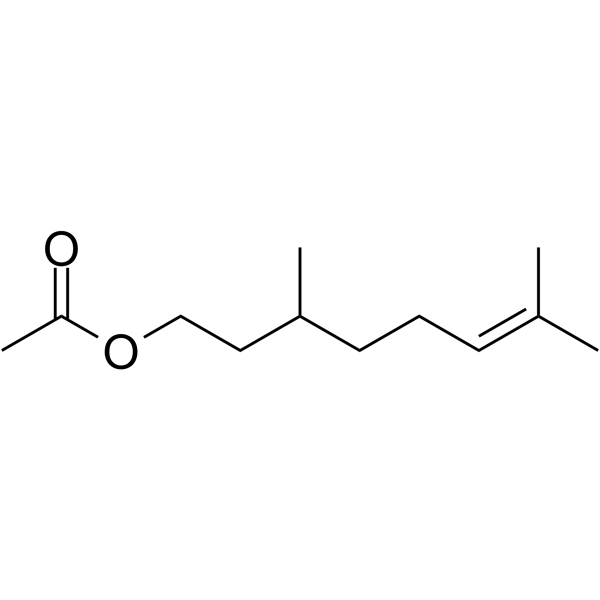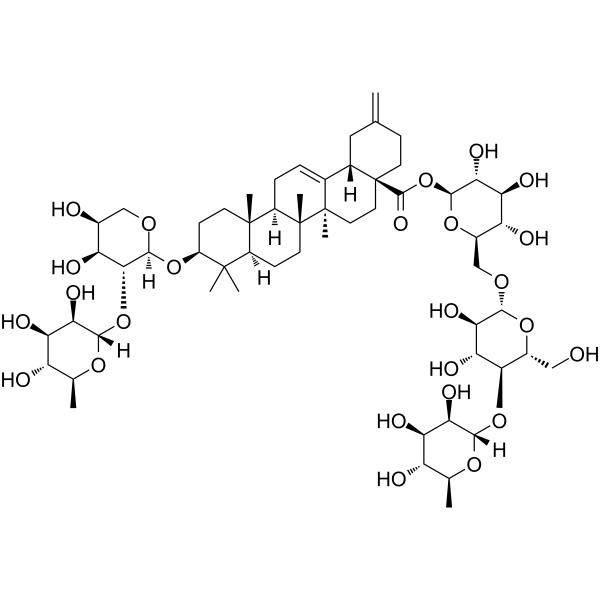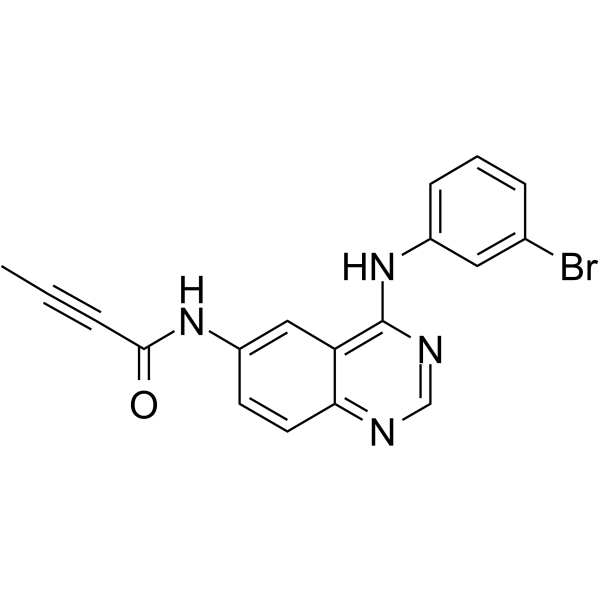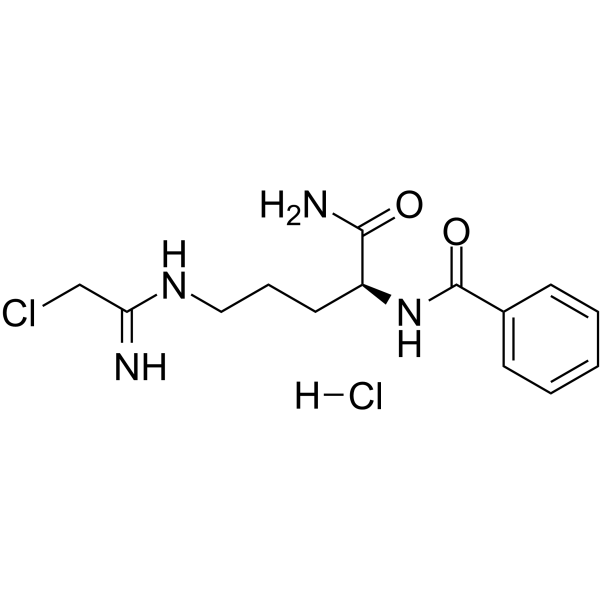|
BP10917
|
Chamigrenal
|
|
|
|
|
β-Chamigrenal has anti-inflammatory activity, it has inhibitory effects on lipopolysaccharide-induced nitric oxide and prostaglandin E2 production in RAW 264.7 macrophages. Chamigrenal shows platelet-activating factor antagonistic activity and the IC(50) value of 1.2x10(-4) M; it also exhibits weak cytotoxicity towards MCF-7 cells(IC50=30.50 uM).
|
|
BP10474
|
Chetomin
|
|
|
|
|
Chetomin is an inhibitor of HIF-1 by weaken transcription of HIF-1, disrupting the binding of HIF-1α and HIF-2α to p300 at low nanomolar concentrations.
|
|
BP10299
|
Chiauranib
|
|
|
|
|
Chiauranib is a multi-target inhibitor against tumor angiogenesis and exhibits potent anticancer effects. Chiauranib potently inhibits the angiogenesis-related kinases (VEGFR1, VEGFR2, VEGFR3, PDGFRα and c-Kit), mitosis-related kinase Aurora B, and chronic inflammation-related kinase CSF1R, with IC50 values ranging from 1-9 nM.
|
|
BP10554
|
Chlojaponilactone B
|
|
|
|
|
Chlojaponilactone B has anti-inflammatory activity, it exhibits pronounced inhibition of nitric oxide (NO) production in lipopolysaccharide (LPS)-induced RAW 264.7 macrophages.
|
|
BP10641
|
CHM-1
|
|
|
|
|
CHM-1 is an inducer of apoptosis, and displays potent antitumor ability in human hepatocellular carcinoma by activation of Cdc2 kinase activity. CHM-1 inhibits tubulin polymerization in vitro and in vivo.
|
|
BP10808
|
CHMFL-BMX-078
|
|
|
|
|
CHMFL-BMX-078 is a highly potent and selective type II irreversible BMX kinase inhibitor with an IC50 of 11 nM.
|
|
BP10976
|
CHMFL-BTK-01
|
|
|
|
|
CHMFL-BTK-01 is an irreversible inhibitor of BTK (IC50: 7 nM) and also potently inhibits BTK Y223 auto-phosphorylation.
|
|
BP10972
|
CHMFL-EGFR-202
|
|
|
|
|
CHMFL-EGFR-202 is a potent, irreversible inhibitor of EGFR mutant kinase (IC50s: 5.3 nM and 8.3 nM for drug-resistant mutant EGFR T790M and WT EGFR kinases).
|
|
BP10926
|
CHS-828
|
|
|
|
|
GMX1778(CHS-828), a pyridyl cyanoguanidine, is an effective inhibitor of NAD+ biosynthesis enzyme NAMPT (IC50 <25 nM).
|
|
BP10864
|
CHZ868
|
|
|
|
|
CHZ868 is a type II JAK2 inhibitor (IC50: 0.17 μM in EPOR JAK2 WT Ba/F3 cell).
|
|
BP10510
|
Cimidahurinine
|
|
|
|
|
Cimidahurinine can attenuate Doxorubicin (DOX)-induced cardiotoxicity in a dose-dependent manner with EC50 values of 45.79 uM; it protects against cardiotoxicity by decreasing reactive oxygen species (ROS) accumulation and downregulating apoptosis-related Bax/Bcl-2 proteins.
|
|
BP10642
|
Cimiside E
|
|
|
|
|
Cimiside E has anti-inflammatory activity, it selectively inhibits TNF-α-induced expression of VCAM-1 at least by upregulation of PPAR-γ, and signals for ERK1/2, PI3K, and PKC are involved in this effect.Cimiside E may be an effective chemopreventive agent against cancer, it arrests cell cycle and induces cell apoptosis in gastric cancer cells.
|
|
BP10203
|
Cinchonine
|
|
|
|
|
Cinchonine, a local anesthetic of the amide type, now generally used for surface anesthesia. It is one of the most potent and toxic of the long-acting local narcotics and its parenteral use is restricted to spinal anesthesia.
|
|
BP10075
|
Cinnamaldehyde
|
|
|
|
|
1. Cinnamaldehyde has antipyretic activity. 2. Cinnamaldehyde is a sedative agent. 3. Cinnamaldehyde inhibits invasive capabilities of MDA-MB-435S cells was correlated with down-regulating the expression of miR-27a. 4. Cinnamaldehyde induces the generation of reactive oxygen species and exerts vasodilator and anticancer effects. 5. Cinnamaldehyde appears to be a promising candidate as an adjuvant in combination therapy with 5-fluorouracil (5-FU) and oxaliplatin (OXA), two chemotherapeutic agents used in CRC treatment. The possible mechanisms of its action may involve the regulation of drugmetabolizing genes. 6. Cinnamaldehyde plays a certain role in inhibiting the occurrence and progression of melanoma and its action mechanism may be manifested by inhibiting expression of VEGF and HIF-α, thus blood vessel simulation and formation of new blood vessels of melanoma cells, and growth of tumors accordingly.
|
|
BP10722
|
cis-Mulberroside A
|
|
|
|
|
cis-Mulberroside A shows high analgesic and anti-inflammatory activities, it can protect mice against ethanol-induced hepatic damage.
|
|
BP10653
|
Cisplatin
|
|
|
|
|
Cisplatin, a DNA-crosslinking agent, is able to suppress DNA synthesis by conforming DNA adducts in cancer cells.
|
|
BP10603
|
Citronellyl acetate
|
|
|
|
|
Citronellyl acetate is a natural product
|
|
BP10176
|
Ciwujianoside B
|
|
|
|
|
Ciwujianoside-B is the main component of Acanthopanax, can relieve fatigue, enhance memory, and improve human cognition.
|
|
BP10890
|
CL-387785
|
|
|
|
|
CL-387785(EKI785; WAY-EKI 785) is an irreversible inhibitor of EGFR(IC50: 370+/-120 pM); is able to overcome resistance caused by the T790M mutation on a functional level.
|
|
BP10435
|
Cl-amidine hydrochloride
|
|
|
|
|
Cl-amidine hydrochloride is an orally active peptidylarginine deminase (PAD) inhibitor (IC50: 5.9 μM for PAD4). Cl-amidine hydrochloride induces apoptosis in cancer cells and it also induces microRNA (miR)-16 in vitro causing cell cycle arrest. Cl-Amidine hydrochloride prevents histone 3 citrullination and neutrophil extracellular trap formation. It improves survival in a murine sepsis model.
|
